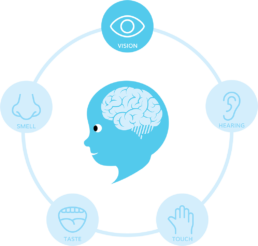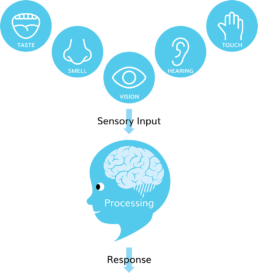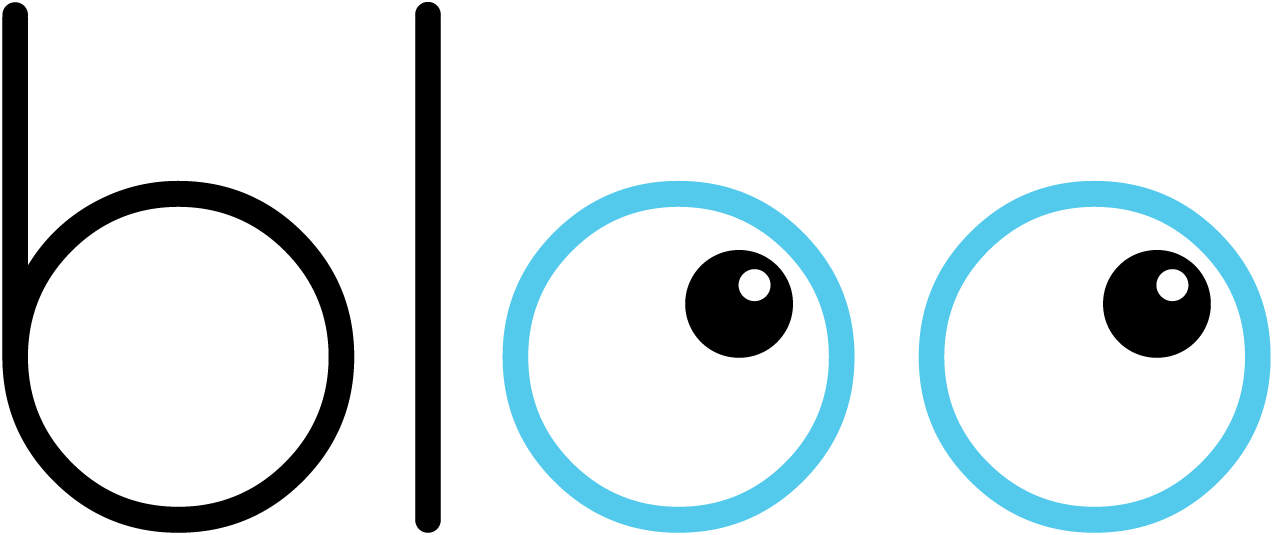From Light Rays To Vision

The eye is a beautiful machine made up of two million moving parts that work together to allow you to see.
The eye works like a camera, taking pictures of your surroundings and sending them to the brain. The light from an object you are seeing enters through the cornea, the eye’s window. The light then passes through the pupil, which is opened and closed by the iris.
The pupil works exactly like a camera shutter, in low light the pupil opens wider and in higher light, the pupil gets smaller. The lens is located behind the pupil, which is like an autofocus feature, it makes sure that the image projected to the brain is clear.
The final destination of the light rays from the object the eye is perceiving is the retina, which is at the very back of the eye. Special cells in the retina pick up the focused light rays and convert them to electrochemical impulses which are then transferred to the brain. The brain translates them into something we can understand. The brain acts as a visual organizer.
Vision Is Our Dominant Sense
Humans’ primary senses are sight, taste, hearing, smell and touch. Our eyes are one of the body’s most important organs and a larger part of the brain is dedicated to vision than to any other sense. The eyes determine how we see and interact with the world around us. We depend on our eyes heavily for our everyday activities.
Driving children to school, cooking dinner or enjoying a sunset are all things we can do thanks to our eyes. Vision brings beauty, meaning and color to everything we do and without vision, our lives are very different.
Not only is vision important for appreciating the world but it is also closely related to many complex skills children learn while growing up. In the first years of development, a child learns to speak and move by observing and imitating the child’s parents.
According to research, 80% of everything we learn is through sight, which makes vision essential for having a high quality life. More than 70% of adults report that losing their eyesight would have the greatest impact on daily life1. Taking care of your eyes and cherishing your vision is important; any potential issues should be addressed as early as possible.

750 Million People
Over 750 million people worldwide suffer from uncorrected refractive errors which can result in impaired vision, learning difficulties, trouble working or performing activities of daily living and even blindness.
750 Million People
Over 750 million people worldwide suffer from uncorrected refractive errors which can result in impaired vision, learning difficulties, trouble working or performing activities of daily living and even blindness.
Sensory Processing Disorders Are Very Common

The brain is responsible for assembling incoming signals from our body and the environment and generating appropriate responsive behaviors. Sensory Processing Disorder (SPD) refers to difficulty integrating information that the brain receives through the senses.
Errors in the integration of this information results in atypical responses and can have a big impact on learning or performing everyday tasks. School failure, anxiety, depression and physical clumsiness are only some of the myriad of problems that can affect children who don’t receive treatment.
Issues with sensory processing can be identified in the first months of a child’s life by noticing irritable reactions to sudden noises, light or physical contact.
A child with SPD might have difficulties processing hot or cold sensations, hunger or tiredness. Sudden changes in the environment such as a sudden flash of light or an unexpected touch can trigger crying and screaming. While such sensations can go unnoticed for healthy adults, in an affected child they cause neurological “panic”.
Research shows that 1 in 20 children are affected by Sensory Processing Disorder. Another study conducted by a team from the Sensory Processing Disorder Scientific Work Group found that 1 in every 6 children experience everyday difficulties because of impaired sensory processing. Such symptoms can be seen in children who were born prematurely or were diagnosed with ADHD or Autism Spectrum Disorder.
bloo Vision Was Founded To Help
Sensory impairment affects millions of people around the world and can impair a person’s everyday functioning and social integration.
If the causes of sensory processing disorder are not identified and then treated during the early years of a child’s developing brain, the effects can be long-lasting and continue through adulthood. Lack of diagnosis and treatment can lead to a reduced quality of life in many ways – difficulty socializing, trouble finding and maintaining employment and/ or challenges in developing and sustaining relationships.
bloo’s mission is to improve the quality of life of people who suffer from poor sensory input and translation. Our goal is to optimize your daily experience through improved sensory processing.

Let's Grow Together
We are thrilled to share our ongoing studies and engagement events. Learn more about what we are currently studying and what we’ve learned in the past.
We are thrilled to share our ongoing studies and engagement events. Learn more about what we are currently studying and what we’ve learned in the past.

